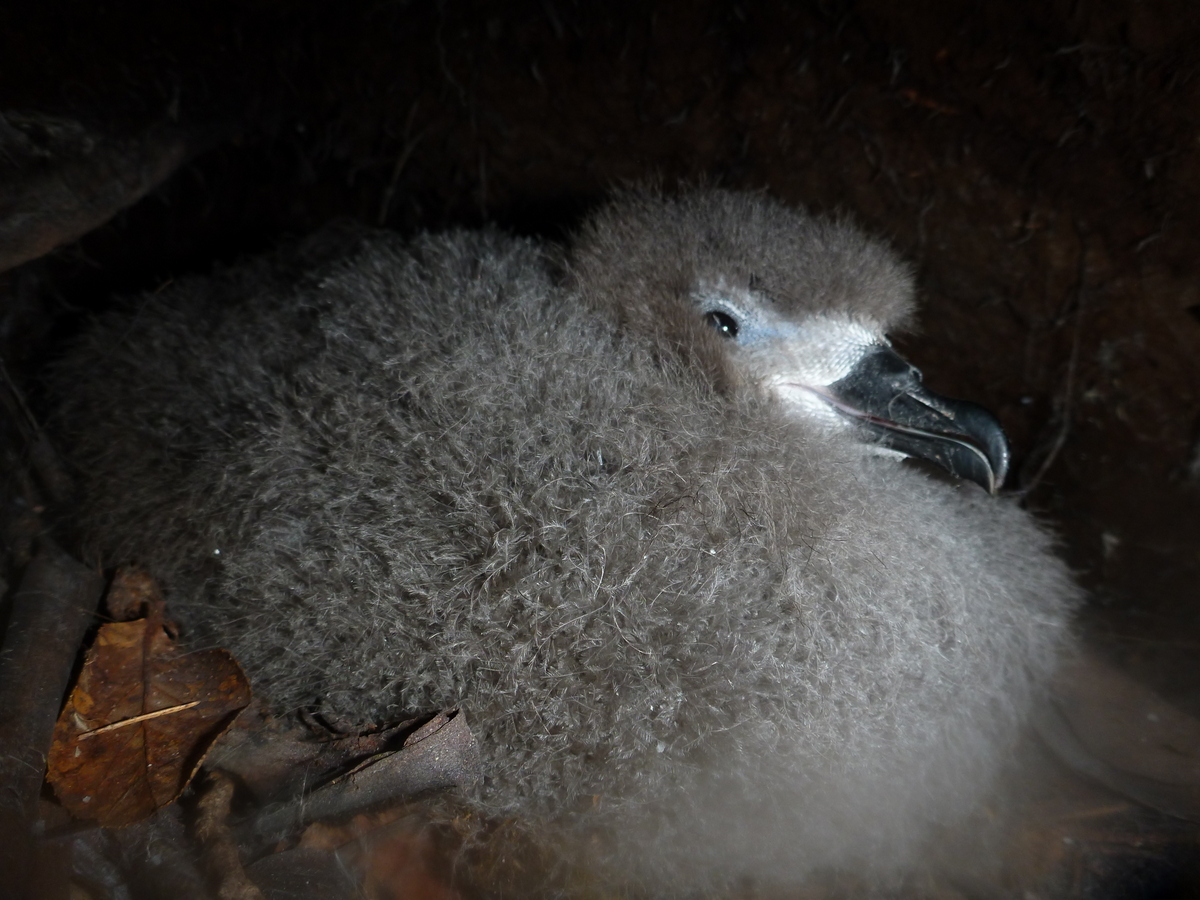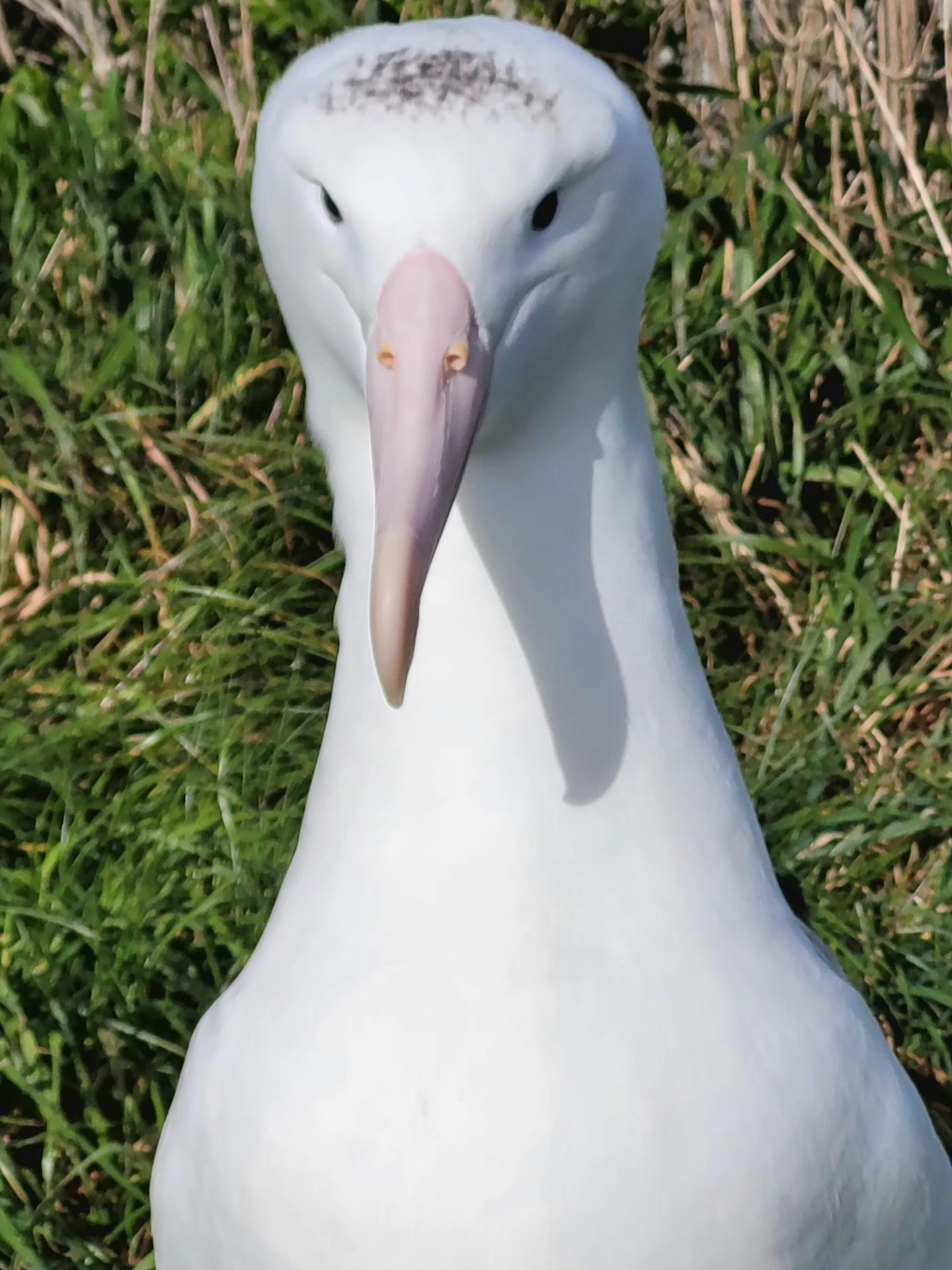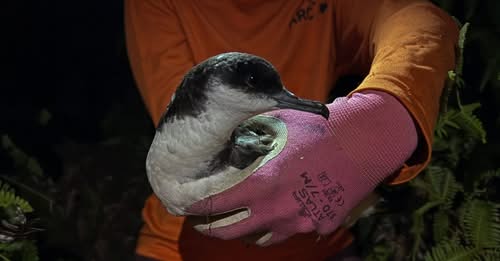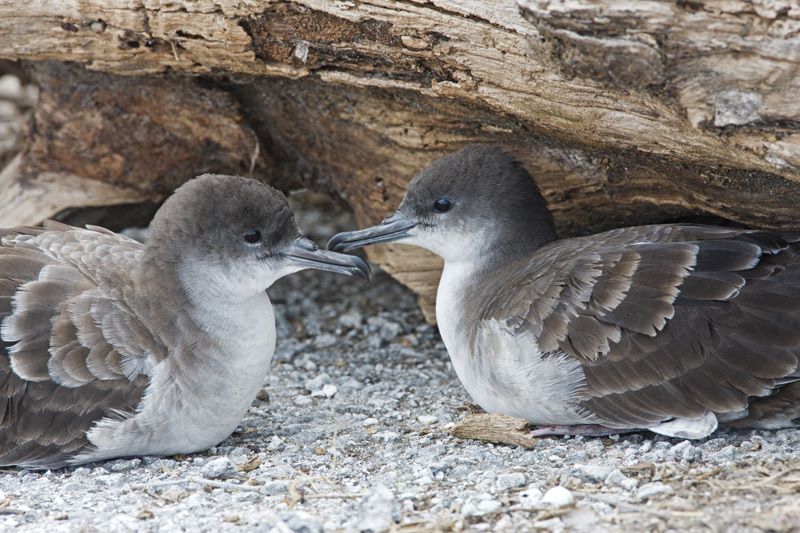 Hawaiian Petrel chick, photograph by André Raine
Hawaiian Petrel chick, photograph by André Raine
André Raine (Archipelago Research and Conservation, Hanapēpē, Kauaʻi, Hawaii, USA) and colleagues have published in the journal Bird Conservation International on two island populations of Endangered Hawaiian Petrel Pterodroma sandwichensis that start breeding two weeks apart.
The paper’s summary follows:
“The ʻuaʻu, or Hawaiian Petrel Pterodroma sandwichensis, is an endangered seabird endemic to the Hawaiian Islands. Genetic, morphometric, and behavioural differences have previously been found between different island populations of the species. Understanding the breeding phenology of different populations of ʻuaʻu is therefore vital for conservation actions targeting the species. To assess breeding phenology of ʻuaʻu on the islands of Kauaʻi and Lānaʻi, two main techniques were used over a 12-year period: direct burrow monitoring and burrow cameras. The breeding phenology of the ʻuaʻu is described based on this data. On Kauaʻi, breeding birds arrive in the middle of April, undergo an exodus of approximately one month, and return to lay in the beginning of June. Incubation continues until early August, followed by chick-rearing, which ends on average two weeks before the chick fledges. Fledging starts in mid-October, peaks in mid-November, and ends in the third week of December. Lānaʻi birds arrive two weeks earlier and fledge one week earlier than on Kauaʻi. On both islands breeding was asynchronous with a 68-day (Kauaʻi) and 48-day (Lānaʻi) gap between first and last fledging birds. Considering phenology data across its entire Hawaiian range, ʻuaʻu first arrive on east Maui, then Lānaʻi, Hawaiʻi Island, and Kauaʻi in that order. These differences in timing presumably reflect and/or reinforce genetic differentiation between subpopulations of the species. The utility of this information is discussed in terms of directing management actions towards key periods of vulnerability to introduced predators, including peak incubation, chick emergence, and chick exercise periods. Description of island-specific phenologies is also critical to inform efforts to rescue fledglings disoriented by artificial light, mitigate powerline collisions, and refine existing monitoring and restoration projects. Future work using acoustic monitoring and data collected at social attraction sites is recommended for assessing the phenology of non-breeders at colonies.”
Read a popular account of the publication here.
Reference:
Raine, A.F., Driskill, S., Sprague, R., Rothe, J., Caceres, G., Schuetz, J., McFarlin, M. & Travers, M.S. 2025. Differences in breeding phenology between two geographically separated populations of the ʻuaʻu (Hawaiian Petrel Pterodroma sandwichensis). Bird Conservation International 35, doi.org/10.1017/S0959270925000024.
John Cooper, Emeritus Information Officer, Agreement on the Conservation of Albatrosses and Petrels, 26 September 2025

 English
English  Français
Français  Español
Español  “New season’s arrivals stand out from the remaining breeders who are still fledging chicks as they have a pale bill unlike the bright pink bill of a parent who has a chick to feed, and they often have dark feathers on the head which will fade during the summer”, photograph by Sharyn Broni
“New season’s arrivals stand out from the remaining breeders who are still fledging chicks as they have a pale bill unlike the bright pink bill of a parent who has a chick to feed, and they often have dark feathers on the head which will fade during the summer”, photograph by Sharyn Broni
 Wedge-tailed Shearwaters, from the Pacific Islands Avian Health & Disease Program
Wedge-tailed Shearwaters, from the Pacific Islands Avian Health & Disease Program